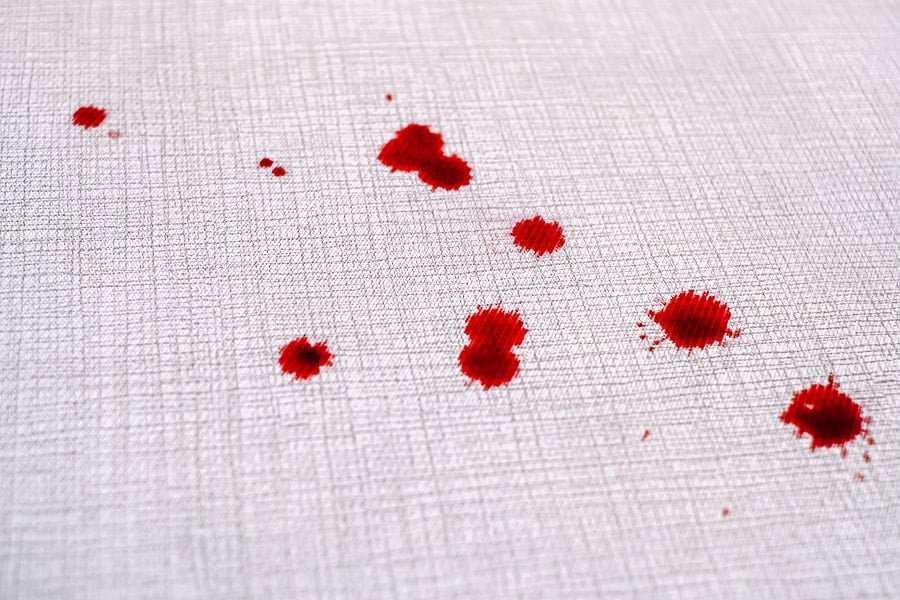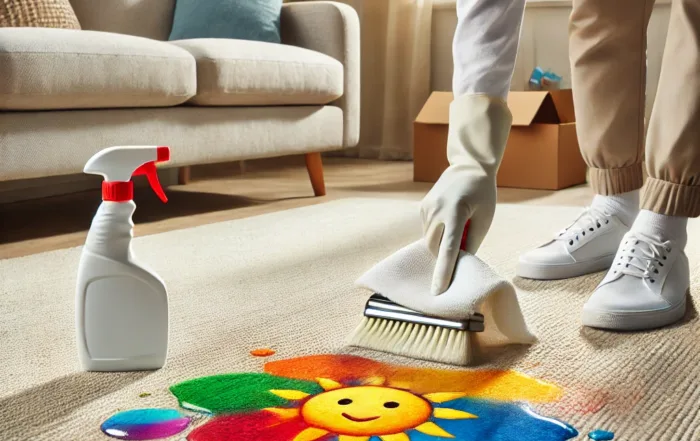
How to remove blood stains from rugs, carpets and sofas?
Categories:
Date Posted:
September 10, 2021
With children there are always accidents, whether it’s a cut or a bloody nose your upholstery is always one of the victims! Online there are so many tales and myths about how to remove blood stains however if not provided with the professional advice the stain could sink in and become permanent! Therefore we have we have gathered the perfect information to help you remove one of the most difficult stains known to man (especially if it has dried out). Whether its fresh or dried at London Carpet Cleaning LTD we know how to help tackle this challenging obstacle.
Why blood is hard to remove?
Your blood contains haemoglobin , once exposed to oxygen in the air, it begins to clot. Despite this being very beneficial when you have a cut on your skin. It is not when clotting begins on your spotless carpet or sofa. If left too long the once crimson red stain will turn brown and will become even more stubborn. To help you find a tailored solutions to overcome this tough obstacle, follow these methods and choose which accommodates best to your stain.
Knowing your upholstery material:
Before we reveal vital steps in cleaning your blood stains it is a good idea to understand some of the different types of fabric that your furniture is made up of. Each fabric has different fibre strength and have specific requirements in order to increase longevity and quality. Having knowledge on the key characteristics of your upholstery will help you decide whether or not to deviate from particular washing guidelines and create your own cleaning adjustments. We have split the most popular and purchased textiles in the UK into categories that is beneficial for you to be informed of:
- Easy to clean: Polyester, acrylic, Olefin, Nylon
- Long lasting: Olefin, Nylon, Polyester, Acrylic
- Not long lasting: Rayon
- Hard Cleaning process AND not very stain resistant: Wool, Cotton
- High -Abrasion Resistance: Nylon
- Low-moisture cleaning: Rayon
- Requires dry cleaning method: Velvet, Silk, Jude, Swede.
London Carpet Cleaning LTD Do’s and Don’ts:
- DO wear gloves when dealing with blood. Diseases such as HIV/AIDS, Syphilis and Hepatitis (B and C) are transmitted via blood. Viruses can survive up to a week outside of a host.
- DO check the labels for upholstery cleaning instructions as well; you don’t want to end up ruining the essence to your home space.
- DO gently dampen the stain instead of making it completely wet.
- DO try using a toothbrush in order to control the stain cleaning (especially if it is a small blood stain)
- DO NOT clean blood with hot water. As haemoglobin is a protein, protein stains will set permanently when combined with hot water.
- DO NOT rub the stain – blotting is the most recommended technique for any stain removal.
- DO NOT soak the stain- as the water will be another weight on the stain, therefore pushing it further into the fibres of your fabric.
- DO NOT use coloured rags, sponges, paper towels or towels to clean your stain. This will prevent colour transfer to your upholstery.
How to remove fresh blood from your carpets, rugs and sofas?
- Use paper towels to gently absorb any excess blood from the area. Be careful to blot gently so that you do not press the blood into the upholstery or fabric. Do not rub or smear the blood, which will create a larger and harder to remove stain.
- Dampen a white towel with cold water and place over the stained area to prevent the stain from drying and setting into the upholstery. For several hours, the moistened towel will help keep the stain from drying. These basic, quick techniques can assist make upholstery stain removal faster and easier once you’ve properly treated the blood stain.
- Combine one tablespoon of mild dishwashing liquid and two cups of cold water in a large mixing bowl.
- Apply the solution to the stain with a sponge in gentle motions
- To remove extra liquid, blot with a dry cloth or paper towel.
- Repeat these steps until the discoloration is gone.
- Rinse the detergent-stained area with a clean towel dampened in cold water.
- Blot with a dry paper towel to remove any excess liquid.
- Leave to air dry.
You could also try to use washing soda!
- Mix three parts washing soda with one part water to make a thick paste;
- Apply the paste to the stain all over. It should completely cover it;
- Allow time for the solution to work; consequently, leave it for at least an hour. (Leaving it to work overnight is the best-case scenario)
- After the solution has dried wipe away the dried paste with a cloth to view the outcome.
- Remove any power remaining of the washing soda with a damp cloth.
What about old blood stains?
Removing older stains will be harder and tougher however we still recommend our cold water method. We strongly advise not to use any chemicals on your carpets, sofas or rugs as not all chemicals are compatible with the fibres your upholstery and the components in the blood stain. Nearly 100% of solutions available for purchase online will permanently harm your carpet’s fibres, potentially making the stain permanent.
If you desperately want to use a stain remover London Carpet Cleaning LTD strongly advise you to test it first on an unnoticed portion of the carpet or rug, such as a corner of the room or a spare patch of material you had before buying it. This ensures that you are aware of any reactions that may occur inside the fibres before using it on the actual stain.
Need professional help?
Couldn’t remove your stain? The professionals we deploy are well-trained in stain removal. They will use the best cleaning approach for your upholstery item based on the stain and the material. You can trust us to remove the stubborn blood stain in order to restore the quality of your furniture. Book a stain removal technician with us at London Carpet Cleaning LTD and contact us at 0203 390 2157.




